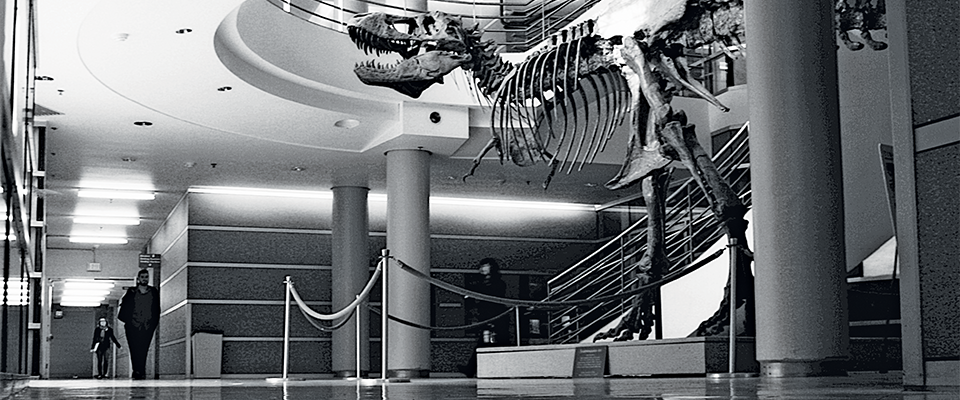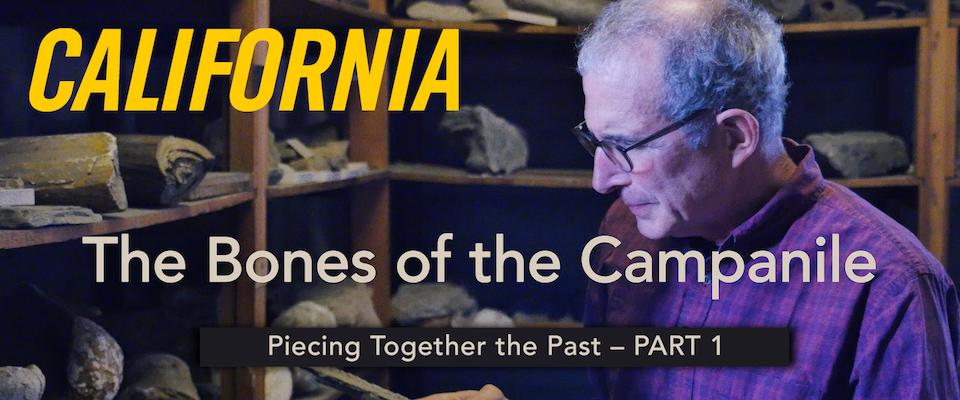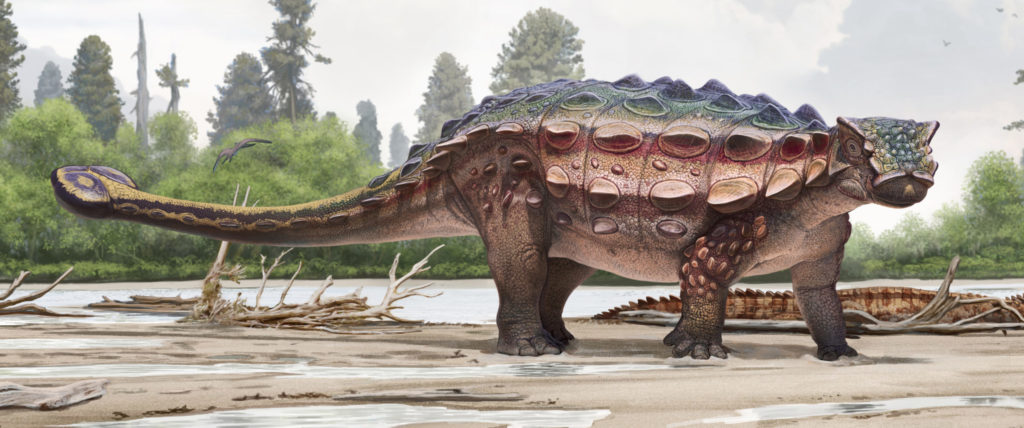The UC Museum of Paleontology celebrates a century of discoveries.
THE UNIVERSITY OF CALIFORNIA MUSEUM OF PALEONTOLOGY (UCMP) celebrates its centennial this year, but the story of its founding begins nearly two centuries ago, when California’s newly formed legislature commissioned a survey of the state, eager to map its gold deposits.
A team of geologists led by Josiah Whitney struck out for the wilderness, collecting fossils and taking meticulous notes on California’s natural wonders, from the soaring granite walls of Yosemite to the towering sequoias of the Sierra—“grand wonders of the vegetable world.” They published their findings in a monumental tome adorned with vivid illustrations and a gold-embossed cover.
But it was the dogged determination of a trailblazing woman scientist named Annie Alexander that gave the museum its official designation.
The legislators were not impressed. They had sent the men out on a prospecting mission—or so they thought. Whitney remarked in frustration at the lawmakers’ disapproval: “We have escaped perils by flood and field, have evaded the friendly embrace of the grizzly, and now find ourselves in the jaws of the Legislature.” When those jaws clamped shut, cutting off funding, the team gave a portion of its fossil cache to the newly formed University of California, establishing the founding collection of what would later become the UCMP.
But it was the dogged determination of a trailblazing woman scientist named Annie Alexander that gave the museum its official designation. Her interest sparked on a visit to Crater Lake in 1899, Alexander began auditing courses taught by the renowned Berkeley paleontologist John Merriam. The two became close, and Alexander, a sugar heiress, began funding the professor’s expeditions, many of which she also joined. Alexander and Merriam were intellectual partners for many years, but she soon grew frustrated with his thirst for recognition and influence.
“I am more than ever convinced that it is quiet research that brings results,” she wrote to the famed naturalist George Grinnell. To ensure that quiet research continued, she wrote to the University in 1921, offering to fund a separate museum of paleontology. The UCMP was born.
“Museum” may be a bit misleading; the UCMP is a research collection and is mostly closed to the general public. That said, it has worked hard to bring its resources to the world via the internet. In collaboration with the National Center for Science Education, the museum has created award-winning educational websites including Understanding Evolution, Understanding Science, and Understanding Global Change.
The only physical public exhibition is a small collection of castings on display in Valley Life Sciences, dominated by the towering T. rex in the atrium. Absent a single building to call its own, the museum’s collection is scattered across campus, including in the Campanile, which houses fossils on five floors—everything from cave bears to saber-toothed tigers. In the years since its founding, the museum has grown its collection to roughly half a million specimens, attracting world-class researchers who have helped shape our understanding of life on Earth.
Marshall says paleontology is in the midst of a revolution, thanks to digitization and the creation of databases such as the Paleobiology Database.
One of those researchers is geologist Walter Alvarez, who, in collaboration with his father, Nobel Prize–winning physicist Luis Alvarez, and Berkeley chemists Frank Asaro and Helen Michel, pieced together the asteroid impact theory explaining the demise of the dinosaurs more than 65 million years ago.
The Alvarezes found a loyal adversary in Bill Clemens, the museum’s eighth director, whose decades spent studying fossils in the badlands of Montana had convinced him that the Alvarez theory was bunk; the dinosaurs had been moving toward extinction for millennia before the asteroid struck. While the feud was mostly collegial, the elder Alvarez famously remarked to the press that paleontologists were “more like stamp collectors” than scientists. Ouch.
The stamp collectors have continued to do groundbreaking science nonetheless. In the ’90s, a team led by UCMP faculty curator Tim White, co-director of Berkeley’s Human Evolution Resource Center, uncovered “Ardi,” a 4.4 million-year-old hominid skeleton in Ethiopia’s Afar Depression that changed the way we think about early human evolution. In 2009, the journal Science called Ardi’s discovery the breakthrough of the year.
Current museum director Charles Marshall emphasizes that the accomplishments of museum affiliates like Alvarez, Clemens, and White are just icing on a much bigger confection. “The real cake,” he says, “is UCMP’s century of hard work, billions of fossils, and thousands of papers that have helped us build a more complete understanding of the fossil record as a whole.” The museum’s strength, he adds, is in “facilitating the interaction of paleontology with the richness of so many other fields: computational biology, math, computer science, ecology, but also from the added information each fossil gives us when we analyze it in relation to the collection as a whole.”
Marshall says paleontology is in the midst of a revolution, thanks to digitization and the creation of databases such as the Paleobiology Database, which he co-founded. While only about 4 percent of known fossils have yet been entered into the Paleobiology Database, the percentage is growing every day. “Lost treasures,” Marshall has written, “are waiting to be rediscovered within museums themselves.”





















